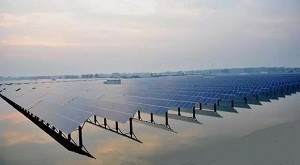I. Advantages and disadvantages of water photovoltaic
 1. Advantages of water photovoltaic
1. Advantages of water photovoltaic1) Rational use of land resources: The land resources can be used to improve the comprehensive utilization rate of lands, such as lakes, mining subsidence areas, abandoned deep mines, etc.
2) The Increase in power generation: The water surface has the effect of cool and specular reflection on photovoltaic modules, and the power generation is significantly higher than that of the ground power stations.
3) Environmental protection: Covering the water surface with solar panels can reduce the evaporation of water surface and inhibit the propagation of algae in water, and it is conducive to the protection for water resources.
4) Less dust. It is easy to clean.
2. Disadvantages of water photovoltaic
1) The construction and operation and maintenance are relatively difficult.
2) The requirements of equipment anti-corrosion and waterproof performance are high, and the requirements of anti PID are also high.
3) The comprehensive development cost of the project is high.
4) There are uncertainties of land use policy and the way of the declaration scale.
3. The forms of water photovoltaic
1) Piling type (water depth ≤ 3 meters)
2) Floating type (water depth > 3 meters)
3) Development trend
The existing scale of the water photovoltaic is small, and the floating photovoltaic mounting system on the shallow water area (within about 3 meters) is mainly composed of "fixed pile driving + fixed mountings" and a small number of floating photovoltaic mounting systems are "fixed pile driving + tracking brackets".
The floating PV mounting system on the deep-water area (about 3-10 meters) is still in the demonstration stage, and its technology maturity needs to be improved. It is an important development direction of water photovoltaic.
The future development trend will break through the limitation of deep-water area and the application of floating PV power stations will be increased.
